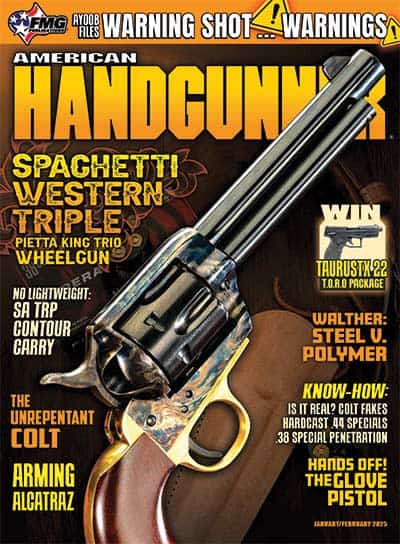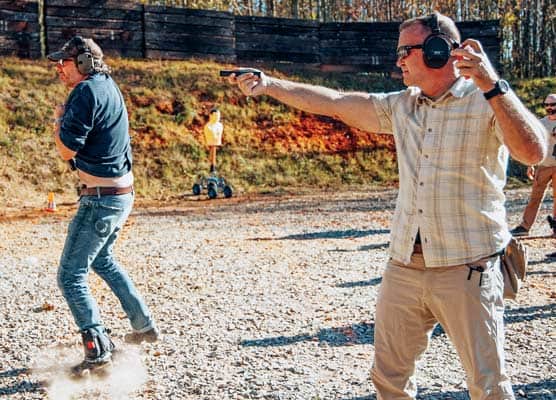Pistolsmithing:
Tooling Up For … Tools
Gunsmithing Tips
Learning a new skill takes practice. For a long time, I have wanted to make a tool set to go with the heirloom pistols I make. I remember looking at magnificent guns in the Metropolitan Museum in New York City and marveling at the detailed work in just the tools that accompanied them. Black powder dueling pistols with matching ramrods and powder measures, wooden handles to match the gun’s stock. I decided I would give it a try.
First, I started taking photos of tools at antique gun shows; then, I clipped some pages from auction house catalogs. My good friend Ted Yost gave me some guidance on what materials work best. Now, I hadn’t used a wood lathe since junior high, so I needed to do a little studying. I purchased a wood lathe with chisels from a retired shop teacher. I started practicing on hardwood I bought at a big box store, trying to get a feel for the machine and how the chisels cut. Woodworking creates so much sawdust and chips I decided it was best to work outside. After a few tries, I got the handle shape I wanted and created a blueprint of sorts for them.
Between the tool shafts and handle is a transition piece called a ferrule. Many antique sets used brass. I needed steel so I could match the bluing on the pistols. Since I was planning on making a number of sets over time, I had a friend make my ferrule design on his CNC machine. By using carbon steel, I could blue, chrome or color case the ferrules as needed.
For the handles, I needed ivory, but that was out of the question. The pistol’s grips are mammoth ivory. I found an ivory substitute that comes in round stock, great for turning. I purchased enough of the 1″ round stock for six 4″ handles. Two would be for practice. The material was a resin-based product that cut very well on both the wood and metal lathe, which I used to bore the holes for the handles.
The tool shafts are made from O1 tool steel in 1/4″ and 5/16″ diameters. The cleaning rod shaft was bored and tapped for a standard 8-32 jag and bore brush. I made a push punch for the MSH cross pin and a screwdriver for the grip screws. Once blued, they were glued inside the white handles. To finish the set, Glen Dean of Custom Chests is making a wooded box in which guns and tools will be displayed. I can’t wait to see the finished project.
Metal Injection Molding
MIM — a word that draws lots of attention among gun owners. It’s almost a swear in some circles. MIM (metal injection molding) has been around for a long time. It’s used in the manufacturing of parts in many shapes and sizes for automotive, aerospace and firearms. To most gun owners, MIM means cheap and unreliable. It can be, it can also be okay if done right and used on the right parts.
I get a lot of questions about the quality of MIM parts. I guess I’m split 50/50 on them. For hard-use parts that wear against others, like sears and hammers, I prefer bar stock. But for some internals, like a revolver hammer blocking bar or mag catches, it’s fine. These are complex shapes that take a lot of machine time. I’m sure manufacturers are always looking at cost in both tooling and time.
My issue with things like a sear and hammer is one of hardness. MIM parts seem to have a surface hardening, which, after long use or any stoning, disappears. This makes keeping a crisp trigger difficult. In some cases, there are no aftermarket options, so we have to live with MIM parts. I’m sure there are more coming. I bet 3D metal printing is also in our future.
Cutting Corners
Sometimes, it’s okay to cut corners. One part I see broken on the 1911 pistol frequently is the firing pin plate. This plate holds both the firing pin and extractor in place. The design has a hole for the firing pin right next to a right-angle cut. This part gets struck every time the hammer strikes the plate while firing. A right angle so close to the firing pin hole creates a stress point and many crack. When fitting a new oversized part with either an EGW or Harrison Design piece, I cut that corner as a radius. Using a small ball mill or even a round file will relieve the stress on that corner. This small thing can make the new part last a lifetime.









